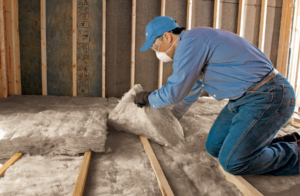Tree service businesses, staffed by certified arborists and skilled technicians, play an important role in preserving tree health, ensuring safety, and contributing to the beauty and value of properties. They offer a wide range of services crucial to trees’ well-being.
Choose a business name that is professional and conveys your company’s focus. It will be on your trucks, uniforms, social media, and documents. Contact Southern Tree now!

Tree service workers face a variety of risks due to their work, including the operation of machinery and equipment, working at heights, unsteady trees that react in unpredictable ways, and electrical exposure from lines atop utility poles. Serious injuries and fatalities for arborists are common, but these incidents can be prevented by setting – and enforcing – strict safety protocols for your employees.
To reduce the risk of workplace accidents, your crew members should receive comprehensive training on tree identification and hazard recognition, equipment operation, proper climbing techniques, and other safety protocols. It’s also a good idea to have a qualified worker (QTW) on site at all times to provide ongoing training and support. The QTW can also conduct a hazard assessment before any climbing takes place, to determine the safest route to the tree’s limbs. This assessment should include weather conditions, as they can present additional challenges like high winds, fog, ice, rain, and sunlight.
Depending on your services, you may use a wide variety of chemicals and fuels to maintain and operate your equipment. These chemicals pose a health risk for your employees and customers when they are incorrectly applied or spilled. Additionally, they can damage nearby vehicles, structures, and walkways. To mitigate these risks, your company should carry general liability and workers compensation insurance, as well as environmental liability coverage if necessary.
Your business property policy should cover the buildings and storage yards associated with your company’s tree services, as well as any tools, equipment, chemicals, or other assets you store on the premises. You may also want to consider adding business interruption coverage, as this type of coverage pays for lost income if your tree services are interrupted by a disaster. When shopping for a business property policy, make sure the insurer you choose offers the best rates and terms for your specific needs. You may also be able to save money by purchasing multiple policies through the same provider. This can be especially beneficial if you have several properties that require similar coverage, such as a home and a commercial property.
Aesthetics
Besides being a vital element in your property’s landscape, trees can also enhance your home’s value and provide privacy. However, it’s essential to choose a reliable tree service provider that will not only maintain your trees, but also ensure that they add to the aesthetic appeal of your property. Fortunately, the professional tree services from Amboy Tree Service will provide you with quality tree care to help you achieve your goals.
The central issues of aesthetics are questions about what makes an object or experience enjoyable. These questions concern the nature of beauty, the concept of taste, and the way we value art or other objects. Aesthetics is also concerned with how we perceive and appreciate natural objects, such as flowers and plants.
In the nineteenth century, philosophers who discussed aesthetics focused primarily on the beautiful and sublime. In later years, the scope of philosophical aesthetics widened to include more general concepts. The most important developments in modern philosophy of aesthetics have been those concerning the relation between aesthetic concepts and other subjects such as ethics, knowledge, and emotion.
Aesthetics is closely related to the philosophy of art, which is concerned with the nature of artistic expression. Monroe Beardsley’s 1958 book on general aesthetics, Problems in the Philosophy of Criticism, emphasized that aesthetic concepts such as beautiful and ugly were not rules or conditions but rather required a certain form of perception and judgment. Frank Sibley’s series of articles on aesthetic qualities, beginning in 1959, also emphasized this view of the purely aesthetic.
More recently, writers on aesthetics have broadened the focus of the discussion to consider more general questions about knowledge, emotion, and value in connection with an awareness of beauty. This development coincided with a change in the approach to art criticism in the latter half of the twentieth century, which moved away from focusing on defining the arts as such and instead focused more on careful analyses of specific aspects of artistic works.
Health
Arborists and tree service companies are trained to assess the health and stability of trees. They can recommend measures like cabling, bracing, or tree support systems to mitigate risks and preserve valuable assets. Additionally, they can assist with identifying tree species that are suitable for a property based on soil conditions and site requirements. This helps to promote the conservation of natural resources and adds to the overall aesthetic appeal of a property.
When it comes to maintaining the health of a tree, pruning and regular tree trimming are essential. This prevents diseases and other issues from developing that can compromise a tree’s appearance, structure, or safety. Additionally, pruning helps to promote new growth and stimulates the development of a healthy root system.
Additionally, arborists are trained to identify signs of a tree disease and know how to treat or prevent them from spreading. This includes recognizing symptoms such as discolored leaves, bark canker, early leaf drop, and stunted growth. Additionally, they can recommend preventative measures like fertilization and pest control to protect trees from diseases.
Trees are a significant investment and add to the value of a home. With proper care, they can last a lifetime and provide countless benefits, including shade, beauty, and environmental advantages. Regular inspections help to ensure that trees remain healthy and continue to enhance the quality of life on a property.
In addition to ensuring that trees are healthy, tree services can also provide assistance with planting and landscape design. They can recommend the best species of trees for a specific environment, assess site conditions, and coordinate with other plant health care professionals to establish an integrated pest management program.
Because tree service professionals work with trees that often grow near power lines and homes, they can be exposed to electrical hazards. They also use a variety of chemicals like fertilizers, pesticides, fungicides, and herbicides in their operations, which can pose health and safety concerns for employees, customers, and the public at large. Additionally, chemical overspray can damage vehicles, structures, walkways, and other property. Insurance coverage for these exposures is crucial for tree service providers.
Maintenance
Trees are a major investment for property owners and provide significant benefits including shade, beauty, tranquility, and increased property value. However, if not properly maintained, they can pose serious risks to people and property. A reputable tree service company can help you protect your trees and ensure their health through regular maintenance, inspections, and other services.
Routine inspections can catch diseases, pest infestations, and structural weaknesses in their early stages, preventing these issues from escalating into costly property damages. During these inspections, you can look for symptoms like discolored leaves, drooping branches, and twig thinning. It’s also important to monitor the soil for any nutrient deficiencies, which may require fertilizer applications.
When choosing a tree service provider, be sure to ask about their certifications, equipment, safety protocols, and insurance coverage. A good sign is if they belong to well-respected industry organizations, as they’ll likely be up to date on the latest best practices. Also, pay attention to the appearance of their trucks and equipment, as this can give you an idea of how professional they are.
In addition to offering regular maintenance services, tree service professionals can assist with planning and landscape design, enhancing outdoor spaces and adding aesthetic value to properties. They can recommend suitable tree species based on factors such as space availability, soil conditions, and desired aesthetics, and provide proper planting and care guidance to prevent potential problems down the road.
During severe weather events or unavoidable circumstances, trees can become damaged or fall onto structures or private property. Prompt responses from tree service companies can mitigate damage, ensure public safety, and facilitate the restoration of affected areas.
Besides pruning and trimming, tree services can include stump grinding to remove the remaining root stump after a tree is removed. This can prevent the formation of tripping hazards or breeding grounds for pests, and it can also allow new sod or plants to be planted on the site. They can also handle other routine maintenance activities such as removing dead limbs, treating for fungal infections and insect infestations, and cabling, which helps stabilize weak branches during storms or high winds.








